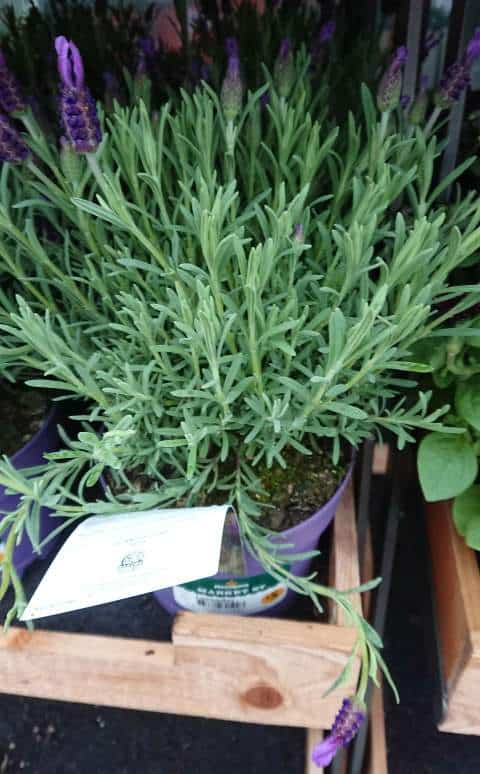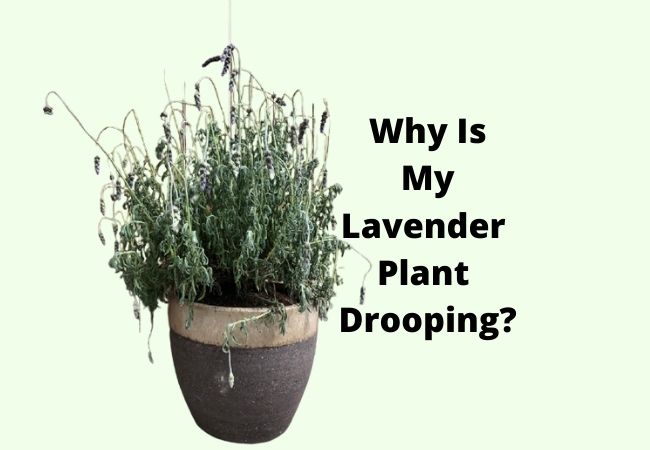Since lavender plants can withstand drought, its drooping is probably an indication of stress brought on by overwatering as opposed to underwatering. It might also be an indication that the soil the roots are in is either excessively nutrient-rich or holds on to moisture for too long.
Lavenders naturally flourish in sandy, well-drained, low-fertility soils when exposed to full sun and are native to the Mediterranean nations of Spain, France, and Italy.
Lavenders can be grown effectively without a garden in a Mediterranean climate, but you will need to mimic some of the circumstances found in their natural habitat.
The three most typical gardening errors that cause lavender to droop are as follows:
- excessively frequent watering of the lavender.
- Lavender is best planted in soils that retain moisture, such clay or rich compost.
- planting lavenders in excessively fertile soil or fertilizing them often.
Between periods of rainfall and watering, the roots prefer to be kept nice and dry.
For the untrained eye, overwatered lavenders may appear to be underwatered because of their drooping appearance and potential browning or yellowing of the leaf.
Some gardeners exacerbate the issue by presuming the lavender needs more water because it appears to be drooping and the roots are starting to rot from being exposed to too much water.
Additionally, permeable soil that allows water to drain quickly without retaining too much moisture is necessary for lavender.
If you have clay soil or rich compost that is inclined to stay damp, water will collect around the roots and the lavender will appear to droop or wilt.
Sandy soil with a medium to low nutrient density is also beneficial to lavender plants. A lanky, drooping lavender plant with few flowers will be encouraged by overly fertile soils (or the use of fertilizers).
Learn how to avoid these blunders and what you can do to fix drooping lavender by reading on:
Table of Contents
1. Water Lavender Infrequently to Prevent Drooping
When it comes to watering lavender plants, less is more. If there hasn’t been much rain during the previous two weeks, you only need to water your lavender once every two weeks during the growing season (Spring and Summer) in hot, dry locations like the Mediterranean or southern California.
Lavenders won’t need any water at all if there has been a lot of cloudy, cool weather with some rainfall, so you can wait for another two weeks without watering.
Established lavenders (those over 2 years old) won’t require any watering at all if you live in an area with frequent rainfall because of their drought resistance (hence lavenders reputation as a low maintenance plant).
All varieties of lavender will droop and finally die if plants are continually overwatered, so stick to a sparing watering regimen throughout the entire year.
English lavenders grown outdoors in temperate locations won’t need watering in the winter because of the decreased evaporation rates and likely rainfall, which will be more than enough to keep them alive.
Spanish, French, and Italian lavender varieties should only be cultivated in warmer locations without substantial winter frosts because they do not endure harsh winters as well as English varieties do.
The non-English lavender kinds probably won’t require any watering at all over the winter, but if it’s been particularly dry, give them some water once a month until spring.
Lavenders only require more water and care after they have recently been planted or relocated.
When transferred, lavender plants may experience transplant shock and need additional water for the first month (water them once per week, after a month resume a normal once per 2 weeks watering schedule).
Consider reproducing these conditions because lavenders like dry, low-water environments and can frequently withstand droughts because to their Mediterranean ancestry.
If it has been dry, water once every two weeks with around 1 litre (35 oz). If there has been any considerable rainfall, skip the watering.
If you’ve been watering your lavender plants too regularly, they’ll recover from their droopy appearance, but you’ll need to let them go dry for at least three weeks for the roots to thoroughly dry out and heal.
2. Improve Soil drainage
The sandy, dry areas of the Mediterranean that receive a lot of summer sun are where lavender is native.
They appreciate soil that is sandy, if not slightly rocky, as it helps water can drain away from the roots readily and doesn’t absorb and hold on to water (like rich compost).
Lack of sunlight causes water-retaining soil to naturally become more soggy, and you will see the same signs of overwatering (a drooping appearance and browning of leaves). Constantly exposed to moist soil causes the roots of lavender plants to rot and die.
For the lavender plant to be healthy, prevent drooping, and create a good bloom of flowers, the roots must be in dry soil.
To enhance drainage and prevent lavender plants from drooping, there are three options:
- Lift your lavender plants out of the flower bed and add sand or grit to the soil.
- Your lavender plants should be moved into pots with better soil.
- Lavender should be planted in a raised bed with fresh soil.
The best course of action if your lavender plants are in a low-lying area of your garden that naturally retains soil moisture is to move them into pots or raised beds where you can simply add sand or grit to their new soil and keep them out of the moist soil.
All types of lavender thrive in raised beds and containers since they frequently offer their roots significantly drier circumstances than if they were grown in garden soil.
If your lavender plants are in the ground, you’ll need to gently remove them with a fork and set them aside before adding a significant amount of sand or grit to the soil to make it more porous and better able to drain.
Lavenders should be planted with at least 30% sand or grit to 70% soil or compost, whether they are in pots, raised beds, or the ground.
I advise using a grit to soil ratio of up to 50:50 in soils with substantial clay content. Grit will make air gaps in the slippery, water-retaining clay, allowing water to seep in.
In order to minimize the plant’s transplant shock, the optimal time of year to accomplish this is in the very early spring or late winter. However, you must amend the soil as quickly as possible if your plant is badly wilting due to inadequate soil drainage.
After adding either grit or sand (both are effective), you should moisten the soil with a hose to observe if drainage has noticeably improved. After a thorough soaking from a hose, the water should quickly drain away from the surface.
Replant the lavenders once you are comfortable with the soil drainage, and the drooping appearance should subside and return to a healthier plant in one to three weeks.
Low fertility sand and grit will balance out soils with higher fertility. Because lavenders develop more foliage and produce less blooms in fertile soil, they bloom best there. For a complete list of factors that encourage lavender blossoms, see my article.
3. Overly Fertile Soil Causes Lavenders to Droop
Rich, nutrient-rich soils work well for growing roses and other plants that require a lot of food, but lavender cannot be grown in these types of soils.
The Mediterranean’s sandy, nutrient-deficient soils are ideal for growing lavender. More fertile soils with an excess of nutrients will promote leaf growth instead of blossoms, giving lavenders a lanky or drooping appearance.
If you fertilize lavenders, the outcome will be the same. Lavender plants joyfully get all the nutrients they require for their sandy soil without the need for extra fertilizer (as verified by the RHS).
The whole list of factors that encourage the most lavender flowers can be found in my post.
Don’t give up if you utilized fertilizer and now your lavender plant is wilting. Even though you might have to accept a meager bloom that year, if you trim back the excessive growth in the late summer, your lavender should recover by the start of the following growing season.
I suggest digging up the lavender (in late winter or early spring) and amending the soil with a lot of sand if you think your land is too fertile for lavenders and is the source of the drooping or wilted appearance.
Sand’s low natural nutrient content will help to offset the soil’s high fertility, making the environment better suited for lavender. In the planting area, aim for a soil to sand ratio of about 30% to 70%.
This will guarantee proper drainage and nutrient balance, preventing lavender plants from drooping and replicating the perfect circumstances for bloom production.
Following soil amendment, quickly replant the lavender and give it a good soak. The lavender might not be at its peak for another year.
Conclusion
Overly fertile soils, the addition of additional fertilizer, excessive watering, or the roots of the lavender plant being in soil that retains too much water are all potential causes of a lavender plant’s drooping appearance.
The drooping shape is an indication of stress in lavender, as is the browning or yellowing of the leaf.
Reduce watering significantly or transplant lavender in soil that has been improved with sand or grit to address the drooping appearance.
In order to keep the roots somewhat dry and prevent root rot, the sand and grit will greatly enhance drainage. Lavender roots that are left in moist soil for an extended period of time may rot and die.
Lavenders can recover from drooping caused by watering in 1 to 3 weeks.
However, if the reason for the lavender’s drooping appearance is high fertility soils, it will be necessary to add sand or git to the soil to effectively lower its nutritional density.
A lavender plant will probably need an additional growing season to recuperate from fertilizer addition, but by the next growth season it ought to look better and provide more flowers.
FAQ
How do I get my lavender to stand up?
If the lavender is in a pot, you can either move the plant to a more exposed, sunny spot or rotate it occasionally so that it receives as much light as possible and forms an even mound, which should encourage it to flower more uniformly.
Will Overwatered lavender come back?
While a plant that has been submerged in water may typically be revived, overwatering can quickly cause your lavender plant to perish. Check for root rot by sliding your lavender plant out of its pot if you believe you have been overwatering it. Simply reduce watering if there is no root rot.
Will my lavender come back to life?
If they are grown in the right climate, lavender does come back after Winter. Unlike English lavender, which can withstand cold weather and re-grow in the spring, French and Spanish lavender are not cold hardy and may not recover after a cold Winter with freezing temperatures.
What happens if you over water lavender?
Lavender deaths can result from overwatering the plants. Because lavender is drought-tolerant, mature plants don’t require constant watering like other garden plants do. They may become susceptible to root rot and fungus if they receive too much water.
What does an overwatered lavender look like?
Lavender that has been overwatered may exhibit yellowing leaves, first on the bottom leaves. Dropping, a decaying smell, and obviously soggy soil are additional signs that a lavender plant needs to be watered less. Lavender that is not receiving enough water will droop, and the soil will feel entirely dry.



